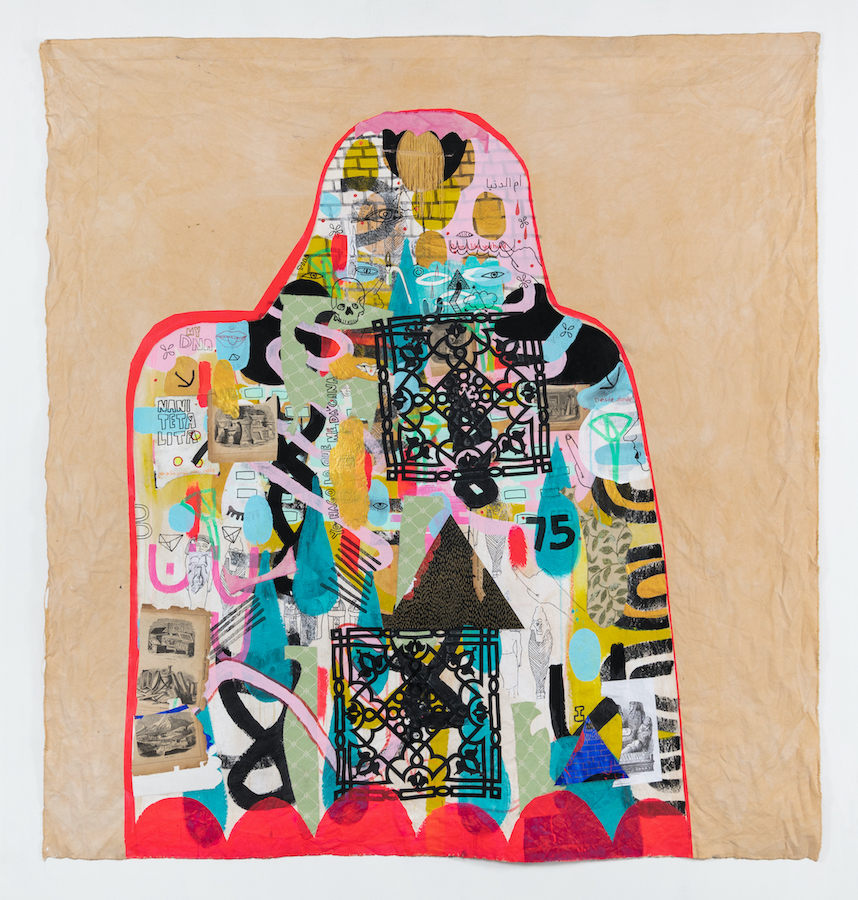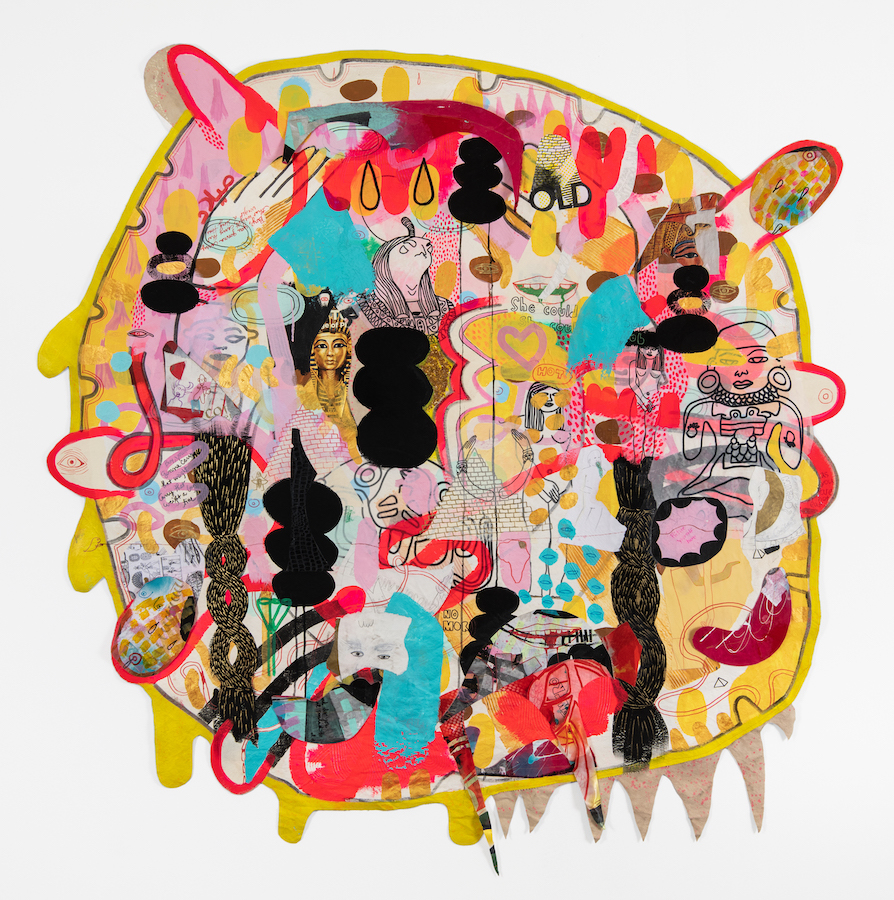DUBAI: The Arab-Latina artist Jackie Milad’s rare heritage and background often feed into her exuberant tapestry work. Her father is Egyptian and her mother is from Honduras, and they raised their daughter in Baltimore, a city that played a significant role in the US civil rights movement in the Sixties.
“I would say it was sometimes very chaotic when I was growing up,” Milad tells Arab News. “I felt, ‘Where do I belong?’ I wasn’t fluent in Arabic — my dad was a very typical immigrant to the US in the early Seventies and he really wanted to become a part of American society, and he didn’t teach me Arabic. He always spoke to me in English, but my mom spoke Spanish at home. That’s the language that I grew up speaking. These two cultures have so many dissimilar things between them, but it’s a very fascinating mix.”
She mentions the word ‘chaos’ to describe her upbringing and the same can be said about her art, but in the most positive sense; it’s a beautiful chaos and a feast for the eyes. Milad’s tapestries are like layered portals taking the viewer to another world — her personal world; a depository for bits and pieces of what interests her.
Her 2021 mixed-media work “Nada Que Decir” is a typical example. In English, its name means ‘nothing to say.’ However, it seems there is a lot to be said, but perhaps when words fail, pictures can do the talking.

Jackie Milad, Stolen, 2021. (Supplied)
Her works contain ancient Egyptian symbols, Mayan icons, sprays of neon color, images of extinct volcanoes and artifacts from museums, patterned cloths, sewn beads, Spanish and Arabic words, drawings made by her son, and hues that remind Milad of her grandmother’s kitchen in Honduras.
“There’s a lot going on but when you step back you get the full picture,” Milad says from her Baltimore studio. “The work is made very intuitively and I’m placing and feeling it out as I go. I’m always going big.”
She is a researcher at heart, keeping aside baskets of books from museums, varied scraps of paper or textile material that may inspire her, such as a blanket used by her late aunt.
“If I come across something that has a particular shape, or it conjures up an idea, or there’s some reference to the poetry that I’m referencing, I’ll use that as a title,” she says.
It was Milad’s long-standing interest in drawing that led her to eventually pursue working with tapestries. “I have always been a drawer. I was focused on a pencil or a pen, simple line drawings,” she explains. “I would accumulate all of these old drawings on paper and I wondered how they could come back to life and be reinvigorated. That’s when I started to use them as collage material. Even though they were paper, they looked like tapestries.”
In Milad’s practice, there is a bit of planning involved, as well as serendipity, but most all, a willingness to go with the flow. “Predominantly, they take a life of their own. I’m improvising and responding, like a musician,” she says.

Jmilad, Birth. (Supplied)
Milad reveals that she has recently been commissioned by the Baltimore Museum of Art to create a site-responsive artwork in dialogue with a 1992 sculpture by the African-American artist Fred Wilson. Wilson’s sculpture — entitled “Artemis/Bast” — is a combination of the white body of the Greek goddess Artemis, topped with the black head of the Egyptian goddess of cats, Bast.
“The call was about how to bridge this theme of myth and history and I immediately felt that this call was for me, because I feel like that’s where I sit with my work,” she says.
There is an element of mystery to Milad’s symbol-laden tapestries, but she wants viewers to have fun with them too, to embrace the unknown, and to be a little uncomfortable with references they might not get.
“I really want it to be a situation where anyone can approach the work and have their own experience,” she says. “At the same time, I love it when someone comes up to my work and has a shared perspective and can say, ‘I know exactly what that means.’ It’s about being included in the story and building community.”












